Urdu education through history, and where it stands in the post 9/11 world

In the 12th and 13th centuries, Muslims from throughout Arabia made their way into the Indian subcontinent, bringing with them strong cultural influence as they eventually ascended to power in the region.
The Indian subcontinent was ruled by Islamic Dynasties until the onset of the British, the last Mughal ruler conceding defeat in 1858. With a Muslim influence, the regional language of Urdu was born, mixing local and foreign speech.
When Pakistan was founded in 1947, Urdu became the national language of Pakistan, a nation created in response to Muslim-Hindu conflict during the British occupation. In sync with Pakistan's defined Muslim identity, so, too, Urdu is a recognised as a Muslim language that is spoken in the Muslim world and derived from ancient languages that are now also considered Muslim languages.
Also read - The lost art of Urdu poetry: Shahr Ashob was a lament for a city
Urdu is one of the Indo-Aryan languages spoken in South Asia. Together with Hindi, it has the second largest number of speakers among the world's languages (after Mandarin).
Urdu is also well known for its romantic literature. The two most famous genres of Urdu are the ghazals and masnavi.
Studying Urdu
In a post 9/11 world, America's interest in Islam and Muslims has peaked. Subsequently, courses are being taught at universities throughout the United States that directly address issues within and surrounding the Islamic World.
Essential to understanding the thought process and social history of Islam is fluency and familiarity with the languages of Muslim regions.
Arabic, Farsi, Turkish and Urdu are recognised as distinctly Muslim languages, their study enabling comparative reading of various traditional and contemporary Islamic texts and insight into the thought process of the Islamic world.
All over the United States, university departments that study topics concerning and surrounding Islam as a global presence are recruiting professors and researchers in response to the growing demand for classes pertaining to the study of Islam and Muslims.
Also read - Urdu poet Mashhadi: want to keep secular tradition of Bihar intact
During the 1960's and 1970's, there were significant waves of immigration from South Asia, and many Indo-Pakistani families settled in America. Whether the children of these immigrants are in the working world, studying in college, or still planning for college, they are all coping with the difficulties surrounding assimilation into an American culture whilst struggling to maintain the morals and values of their parents.
First generation South Asian-Americans are laying a distinctly Americanised foundation for future generations. That is not to say, however, that they do not prioritise and take great pride in their Indian and Pakistani heritage.
Preserving Urdu
Additionally, beyond the conventional university classroom, there have been various movements within the Bay Area to preserve and maintain a distinctly Urdu, South Asian identity. Mushairah, Urdu for Poetry Reading, is the name of an event held regularly in the East Bay.
These evenings of Urdu poetry include recitation of original and classic works, and usually go well into the night. In addition to larger restaurant settings, these readings are also held in individual households across the area. Clearly, through creating a setting that immerses those present in a celebration of the profundity and exemplary beauty of Urdu poetry, the men and women involved in Mushairahs have found a way to maintain their poignant attachment to their heritage.
The ways in which one can feel more connected to one's culture through learning Urdu are fairly obvious; with knowledge of the region's language one is enabled to speak to just about anyone they encounter in India and Pakistan, the message of Urdu classic and contemporary songs is suddenly decipherable, and the spirit of one's relationship to the culture is almost invigorated as the barriers of understanding slowly come down. Urdu courses offered in American universities provide a gateway into past tradition and reality for Indian and Pakistani-Americans.
In a time where Bollywood movies are making their way into American theaters, an Indian-flavored remake of Jane Austen's classic Pride and Prejudice opened nationwide few years ago, a cross-cultural experience is being defined that celebrates the ups and downs of international fluency.
This gradual embrace of a region's distinct fashions and entertainment has opened up avenues of dialogue and an environment in which an Indo-American's individual embrace of their Indian heritage is facilitated, if not wholly encouraged.
Also read - Urdu writers must declare their books are not anti-national or anti-government
Reflections: I learned to read and write Urdu fairly quickly, as the letters and sounds are pretty much the same as Arabic- a language that I had been reading since childhood. The speaking and pronunciation part, however, was a different story.
I was clearly an Urdu novice, and struggled during oral practices and class discussions. That is not to say, however, that the experience was not fully rewarding. I learned a tremendous amount about my heritage, and loved every moment that we spent deciphering the meaning behind Ghalib and Allama Iqbal's poetry and various Urdu sayings and folk tales.
During my undergraduate career, the semesters that I was actively engaged in learning and pursuing Urdu in the classroom stand out as semesters in which I felt a certain sense of fulfillment. To be pursuing my heritage and culture was truly satisfying; the study of Urdu was a natural bridge between me and my native country.
Learning Urdu clearly enabled people to feel more Indian, and it always made their visit to the subcontinent truly rewarding.
(The author is a well known linguist and teaches at Washington University in St. Louis, USA. He may be contacted at [email protected])
First published: 9 November 2016, 1:07 IST
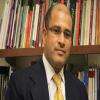
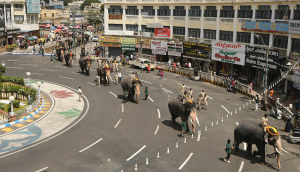
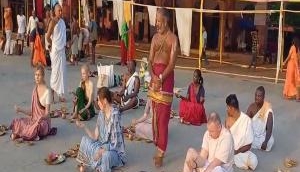
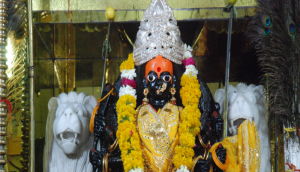
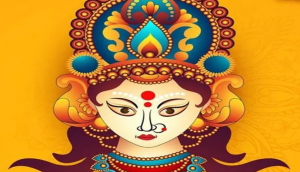
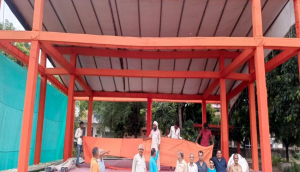
![BJP's Kapil Mishra recreates Shankar Mahadevan’s ‘Breathless’ song to highlight Delhi pollution [WATCH] BJP's Kapil Mishra recreates Shankar Mahadevan’s ‘Breathless’ song to highlight Delhi pollution [WATCH]](https://images.catchnews.com/upload/2022/11/03/kapil-mishra_240884_300x172.png)

![Anupam Kher shares pictures of his toned body on 67th birthday [MUST SEE] Anupam Kher shares pictures of his toned body on 67th birthday [MUST SEE]](https://images.catchnews.com/upload/2022/03/07/Anupam_kher_231145_300x172.jpg)






